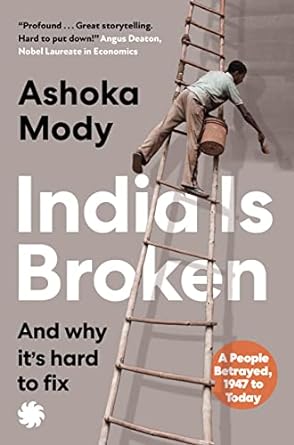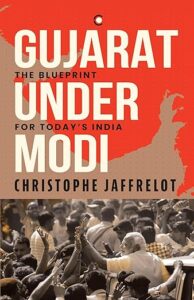India is Broken – A People Betrayed, 1947 to Today, is a masterfully woven political and economic history of postcolonial India. The author, Ashoka Mody, critically reviews the policies of successive leaders from Jawaharlal Nehru to Modi. He argues that no government since independence has put the people at the core of their policies, especially the economically poor of the country. The book is a deeply researched study of how successive governments failed to generate employment and establish a strong health and education infrastructure.
Nehru, the author says, focused on building heavy industries, big dams, and institutes of higher education, but ignored primary education and the health system completely. He called these heavy industries and dams the “temples of modern India”. However, the author argues that too much attention and money were spent on developing these heavy industries, and less attention was paid to public goods.
The author rejects the public notion that India was/is a socialist state. He argues that the widely accepted notion that the socialist policies of Nehru and later Indira Gandhi’s government stunted economic growth is a myth. As per the author, India was never a socialist country. It was and is like Western capitalist economies.
“Socialism means the creation of equal opportunity for all. In this sense, India never implemented socialist policies. A common mistake is to identify central planning or big government as socialism, but these are tools of economic policy, not socialism.”
The book takes us through the time of emergency. One of the darkest periods of post-independent India. Not only were civil liberties crushed, but it also saw the rise of corruption, open hate-mongering against Muslims, and the dilution of democracy and other agencies. Despite being voted to power on the slogan of “Greebi Hato” (Remove Poverty), the government failed to introduce any meaningful policy changes to address the issue.
“Human development goals were not priorities for Mrs. Gandhi. Asked why Indian literacy rates remained so low, she answered: “I don’t know how important literacy is. What has it done for the West? Are people happier or more alive to problems? On the contrary, I think they have become more superficial.” Mrs. Gandhi had remained consistent in her neglect of human capital.”
“India is Broken“ examines the era of Rajeev Gandhi, V.P. Singh, Narasimha Rao, and Atal Bihari Bajpayee and their policies. He argues that despite the liberalization of the Indian economy, the benefits did not reach the people living below the poverty line, and inequality widened in the late 1980s and 1990s. This was also the time when Hindu majoritarian forces came out of the closet and the BJP took center stage with its Hindutva politics. The central theme throughout the book is the lack of focus on education, the health system, and inclusive economic policies.
In one of the chapters towards the end of the book, titled “Modi Breaks India’s Fractured Democracy”, the author talks about the present state of the country. As per the author, a common thread that runs through successive governments post-independence is the neglect of human resources. This neglect, as per the author, is the main reason why India is at the bottom of many socio-economic indicators. More concerning than failing in these indicators is the denial of the present government. And this denial of reality could be the only reason the author says India is Broken and why it is hard to fix.
A compelling, engaging, and well-written book, “India is Broken,” that takes the readers on a journey of India’s history of politics and economics since independence. It is a well-argued critique of successive Indian governments and their failure to focus on and improve the human capital of India, resulting in poor socio-economic conditions for most Indians.
About The Author
Parakala Prabhakar studied at JNU and the London School of Economics. He was the Communications Adviser to the Government of Andhra Pradesh between 2014 and 2018 and held a Cabinet rank. He is currently the MD of Right FOLIO, a knowledge enterprise based in Hyderabad. He is also a widely-read columnist on current affairs and has a popular YouTube channel, ‘Midweek Matters’, where he discusses issues related to India’s politics, economy, and contemporary society.


